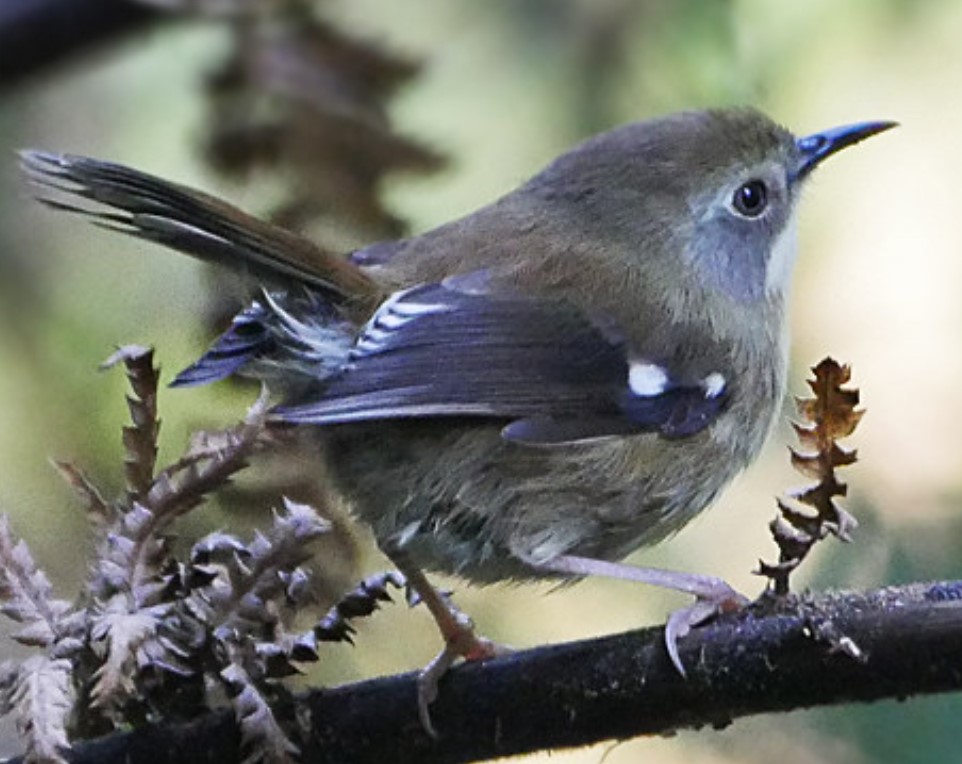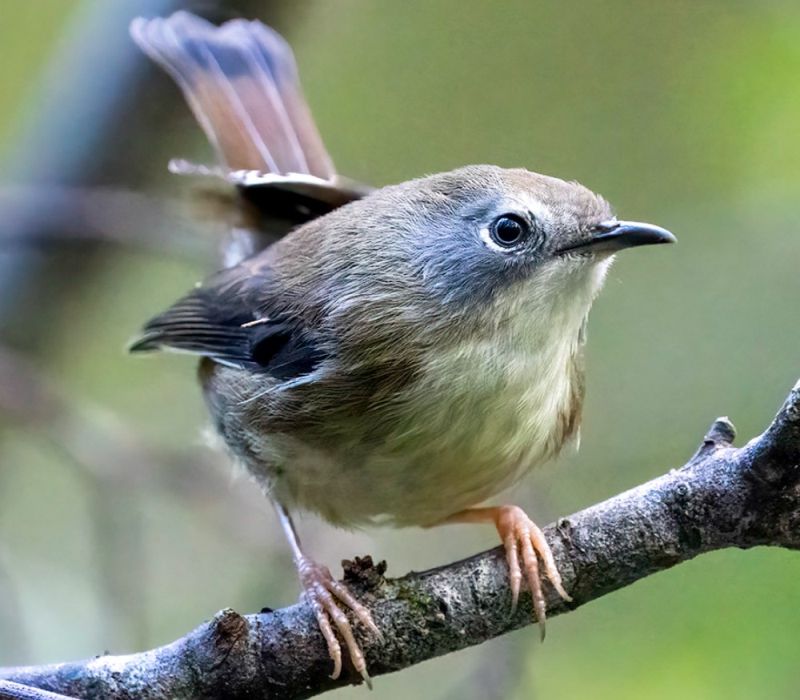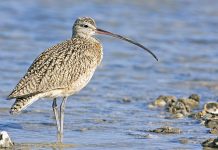Family: Scrubtit (Acanthornis magna) belongs to the thornbill family Acanthizidae
Habitat: Scrubtits are sedentary birds that live in temperate rainforests. It is found in taller subalpine thickets and underbrushes of wet sclerophyll forest in Tasmania and in tea tree Melaleuca scrub on King Island. Here, the established pairs maintain territories at least during breeding and probably remain in their vicinity all year; the young, however, are dispersed during late summer or autumn. The species is incredibly timid and unassuming, and humans seldom ever see it.
Identification: Both sexes are similar. The upper parts are mid-grey, washed russet; the wings are darker grey, with large white spots without primary coverts. The tail is russet-grey, with an off-white tip and black subterminal bar. The off-white brow spot and eye ring make the face grayer. Underparts are white, washed russet-grey down flanks. The eyes are red-brown. The bill is dusky. The feet are pink-brown. The immature bird (as an adult) is washed pale yellow below, along with brown eyes.

Behavior: Alone or in pairs, the birds forage in the shady forest or shrubbery mid-stage, at one to ten meters above the ground, using techniques that help them avoid direct competition with other shrub-gleaning insectivores. Instead of concentrating on foliage, the scrubtit hop-searches up the smaller trunks of trees and over main branches, like a treecreeper. It works methodically over one tree, then flits to the next, poking and probing into crevices for insects and spiders. For this, it has a slender, somewhat downcurved bill. Although the birds do sometimes glean over foliage, at least 70–90 percent of their feeding time is spent on the larger branches and trunks. In display, one bird—probably the male—faces its mate at a distance of 30 centimeters on a perch, fans its tail, spreads its wings, lifts them slowly, closes them, and repeats the sequence. Then, with feathers fluffed, it bows, tilts, and pivots its head, to the accompaniment of quick tinkling.
Nesting and Breeding: Tasmanian scrubtit nesting and breeding occur in September–January. The nest is a large dome about 20 cm high with a hooded side entrance about 4 cm in diameter. The nest is made of loosely woven bark strips, dried grasses, moss, and fern rootlets, intermingled with moss. The nest is lined with fern rootlets, feathers, and fern down; usually hidden un or near ground among plants, in dead fern fronds, a bush, or a low tree.
Eggs: The bird lays three or four eggs; white, sparsely speckled, or finely blotched with red-brown; swollen oval, about 18 x 14 mm. The species is victim to brood parasitism by fan-tailed cuckoos and shining bronze cuckoos, and quolls take eggs and nestlings. Both parents feed the baby.
Distribution: Tasmanian scrubtit is found in forest undergrowth, beech forests, tall subalpine shrubberies in Tasmania, and tea tree scrub on King Island.
Vocalizations: Scrubtit call is Scrubwren-like churrings while feeding. However, the song consists of a short, whistled to-wee-to. Mostly silent, but sometimes loud sounds are so sweet and musical.
Alternative Names: This Tasmanian scrubtit is also known as Fern Weaver and Mountain Wren.
Size: Scrubtit measures about 110–115 mm in length and weighs about 10–12 grams.
Races: There are no races.
Similar Species: This little bird resembles the Sericornis scrubwrens.
Status: Within the restricted range, its population is stable and not threatened by the IUCN.
Read More: Diamond dove (Geopelia cuneata)







